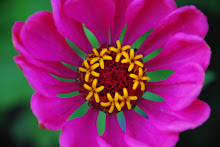 It's finally tomato planting time in Portland! (Photo of ME delighted to be planting tomatoes!) I think gardeners get most excited about growing this one vegetable (technically a fruit). There is always "tomato madness" at the nursery every spring. Usually I would plant my tomatoes at the end of May. However today it's 80 degrees and the forecast is for the 2 days in the 80s and the extended forecast has night temps in the 50s the next 7 days, so I'm going for it! And since my soil is in raised beds it is very very warmed up. When I dig down 6 inches it's still literally "steamy" to the touch. Here are some tips I can offer towards tomato growing success:
It's finally tomato planting time in Portland! (Photo of ME delighted to be planting tomatoes!) I think gardeners get most excited about growing this one vegetable (technically a fruit). There is always "tomato madness" at the nursery every spring. Usually I would plant my tomatoes at the end of May. However today it's 80 degrees and the forecast is for the 2 days in the 80s and the extended forecast has night temps in the 50s the next 7 days, so I'm going for it! And since my soil is in raised beds it is very very warmed up. When I dig down 6 inches it's still literally "steamy" to the touch. Here are some tips I can offer towards tomato growing success:- Tomatoes like warm weather. You might be tempted to plant your tomatoes in April when we have a warm spell in Portland, but if you do you are asking for trouble. Tomatoes will be stunted with day or night temps under 50 degrees. Optimal time for planting in Portland is usually May15-the end of May. This is for the planting of "starts" not seeds. Portland does not have a long enough or hot enough summer to facilitate direct seeding tomatoes. If you want to start tomatoes by seed indoors your planting time is mid-February.
- Tomatoes need FULL sun and lots of it. They will not set fruit in shady areas.
- Tomatoes are "heavy feeders." Prior to planting amend your soil with compost and organic matter. I recommend Bumper Crop compost, Earthworm Castings & Coir. I work in all of these amendments prior to planting with an organic granular fertilizer, which will slow release to your plants through out the season. I custom blend my own. For a packaged fertilizer I'd recommend Down To Earth brand Vegan Mix or EB Stone brand Tomato & Vegetable fertilizer. At planting time and every other week I water my tomato plants with liquid seaweed. At planting time I also fill the planting hole with earthworm castings.
- Tomatoes have very long root systems (3-4 feet) and they need plenty of room to grow. Make sure your planting bed is tilled deep enough for the tomato's roots. That also means no shallow containers, if you are growing in a pot. Give the plants plenty of space between each other.
- Tomatoes don't need a lot of water. I made the mistake of over-watering my tomatoes last year, which caused blossom end rot. By over-watering I mean several times per week. When I consulted with veggie experts they all recommended a deep watering only once a week throughout the growing season. In a previous year, my inconsistent watering routine caused my tomatoes to crack and split open.
- At planting time I put in the planting hole a spoonful of Rock Phosphate & Lime. These are good sources of calcium to help prevent disease problems tomatoes are prone to. Traditionally people have recommended Bone Meal as a source of calcium for tomatoes. It has 20% calcium and has high amounts of water-soluble phosphorus. However, bone meal is a by-product of the slaughter house industry and I'm not down with that. That's why I switched to Rock Phosphate, which has 19% calcium. It is a great source of both calcium and phosphorus to your plants with long-term availability up to 5 years! So, in conclusion: Rock Phosphate + Lime=good stuff for your tomatoes and no animal buddies killed for your gardening success!
- Rotate your crops. Do not grow your tomatoes in the same place every year. This will create disease and pest problems. Use a 4 year rotation for all crops!
 by step guide to planting:
by step guide to planting:


1. Dig a planting hole about 6 inches deep.
2. Drop in a spoonful of rock phosphate & lime.
3. Drop in a scoop of earthworm castings.
4. Place your tomato plant gently in the hole. Plant deep enough to cover the first set of leaves. Tomato plant leaves can sprout roots!
5. Fill in around the plant with earthworm castings.
6. Water in well with liquid seaweed.



7. Provide support (tomato cage) at planting time. Doing this later you run the risk of damaging the plant roots.
8. Tell them how much you love them and then daydream about all the tomatoes you'll harvest in August for fresh eating, saucing, canning....














